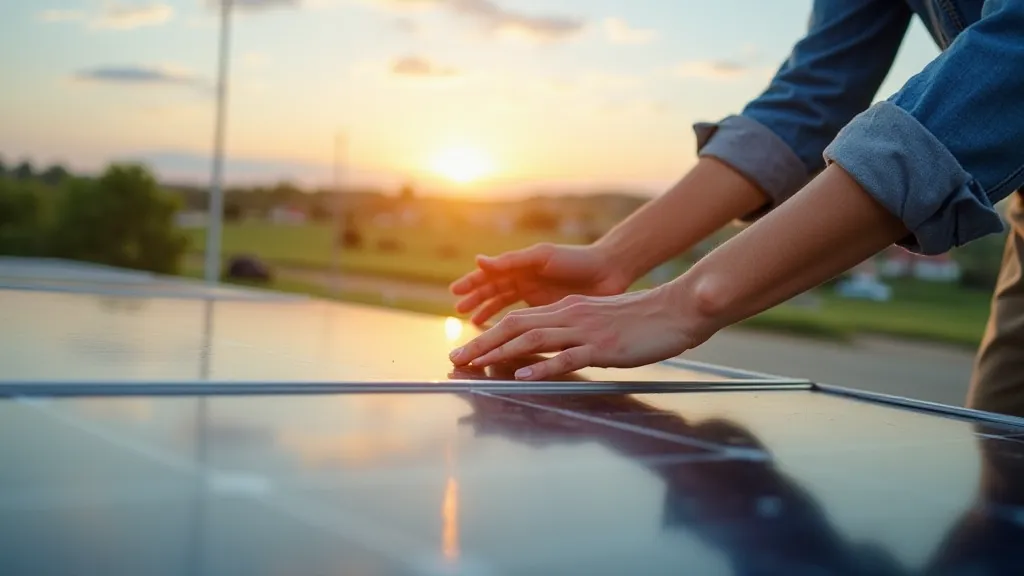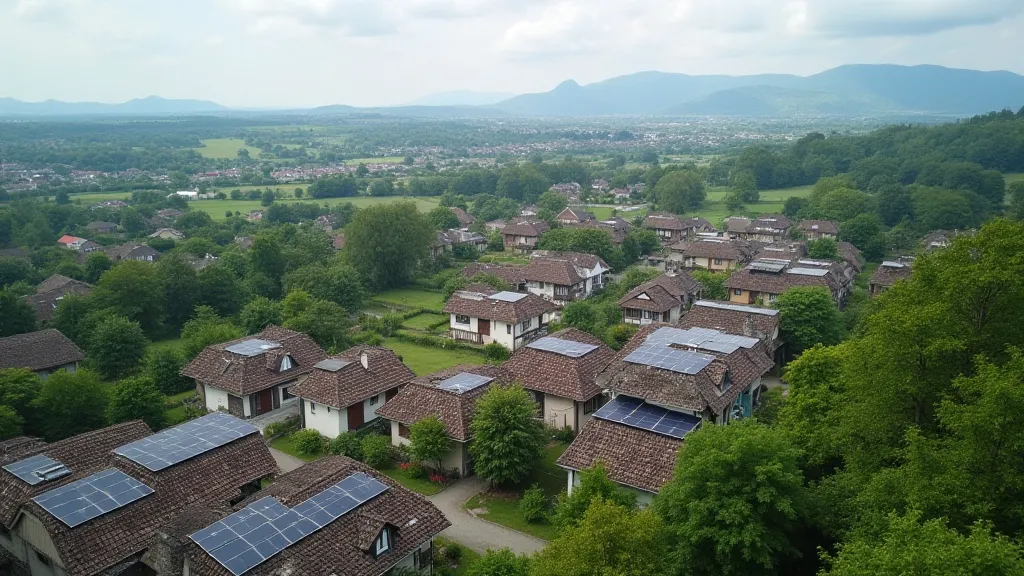Solar Bloom: Harvesting Sunlight & Cultivating a Decentralized Future
There's a quiet poetry in the breath of an old accordion. The way the bellows expand and contract, a rhythmic inhale and exhale, mirroring the cycles of nature. My grandfather, a carpenter with hands as rough as bark and eyes that held the wisdom of generations, possessed one. It wasn's particularly grand – a simple diatonic model, its paint faded and chipped – but to him, it was a connection to his ancestors, a vessel for the music that pulsed through his family’s history. That same feeling, that same reverence for legacy and the enduring power of human ingenuity, is what I feel when I contemplate the shift towards decentralized, renewable energy.
For so long, we've relied on a system – a centralized grid – that dictates how and where we get our power. It's a system built on extraction, on pipelines and power plants often situated far from the communities they serve, creating dependencies and often, disproportionate environmental burdens. But what if we could rewrite that narrative? What if we could create a system as intricate and harmonious as my grandfather's accordion, capable of generating power locally, empowering communities, and fostering a profound sense of ownership and responsibility?

The Centralized Grip and the Promise of Decentralization
The history of electricity itself is a story of centralization. Early power grids were built to serve urban centers, efficiently distributing energy to homes and businesses. But this efficiency came at a cost: a consolidation of power, literally and figuratively. The control over energy production and distribution became concentrated in the hands of a few large corporations, creating a system that is often unresponsive to the needs of local communities and resistant to innovation. This system encouraged a culture of consumption that often leaves people feeling disconnected from the origins and impacts of their choices. It's a phenomenon that mirrors broader trends in our modern lives, prompting many to question the impact of their daily routines and consider alternatives, as explored in “The Echo of Footprints: Reclaiming Narrative in a Consumerist Age”.
Now, imagine a different scenario. Imagine rooftops adorned with solar panels, powering homes and businesses. Imagine community solar farms, owned and operated by local residents, generating clean energy and creating local jobs. Imagine energy cooperatives, where individuals can invest in renewable energy projects and share in the profits. This isn't a utopian fantasy; it's a growing reality, a "solar bloom" – a blossoming of localized energy production fueled by technological advancements and a growing awareness of the need for a more sustainable and equitable future.
Community Solar: A Seed of Empowerment
Community solar programs are particularly compelling. They provide an opportunity for individuals who may not have the financial resources or the suitable roof space to install their own solar panels to participate in the renewable energy revolution. Think of apartment dwellers, renters, or individuals with shaded roofs. These programs allow them to subscribe to a share of a local solar farm and receive credits on their electricity bills, effectively sharing in the benefits of clean energy. They're a practical step towards democratizing energy access and fostering a sense of collective ownership. We are all increasingly aware of the choices we make and their wider impact; embracing community solar aligns with a broader movement toward conscious consumption and ethical purchasing decisions.
There’s an elegance to it, a mirroring of how my grandfather would meticulously repair antique accordions, carefully sourcing parts, ensuring each element contributed to the whole. The individual panels, the inverters, the battery storage – they’re all components of a larger system, contributing to a more resilient and decentralized energy network. Just as a single key on an accordion contributes to the richness of the music, each element in a community solar project contributes to the overall sustainability of the system.
Beyond Solar: A Portfolio of Renewables
While solar power is often the focal point, the decentralized energy future isn’t limited to one source. Wind, hydro, geothermal, and even biomass – when sustainably managed – can all play a role in creating localized energy systems. The beauty of decentralization is its flexibility; communities can tailor their energy portfolios to their specific geographic and environmental conditions. This shift in mindset aligns with broader efforts to reduce our collective environmental footprint, as detailed in “Reducing Your Carbon Footprint: Actionable Steps for a Greener Future.”
My grandfather always maintained that the best repairs weren't just about fixing the immediate problem, but about understanding the underlying principles of how the accordion functioned. Similarly, a successful decentralized energy system requires a holistic approach, considering not only the technical aspects but also the social, economic, and environmental implications. Furthermore, embracing decentralized energy solutions often involves a conscious effort to support local economies and reduce reliance on global supply chains—a principle that extends to how we source our food and other essentials.
The Role of Blockchain: A Distributed Ledger of Energy
The emergence of blockchain technology adds another layer of potential for decentralized energy systems. Imagine a system where individuals can buy and sell energy directly from each other, without the need for intermediaries. Blockchain can facilitate this peer-to-peer energy trading, creating a transparent and efficient marketplace. The immutability of blockchain also provides a powerful tool for tracking energy production and consumption, promoting accountability and reducing fraud. This concept resonates with the increasing demand for transparency and traceability across various industries, reflecting a broader desire for a more equitable and trustworthy system.

Cultivating Resilience and Fostering Collective Responsibility
The shift towards decentralized energy isn't just about reducing our carbon footprint; it's about cultivating resilience and fostering a sense of collective responsibility. When communities control their own energy sources, they are less vulnerable to disruptions in the centralized grid, whether caused by natural disasters, cyberattacks, or political instability. They become more self-reliant, more resourceful, and more empowered. This move towards localized systems also allows for increased adaptability to changing climate conditions and resource availability.
Restoring my grandfather's accordion wasn't just about preserving a piece of history; it was about reconnecting with a legacy of craftsmanship and ingenuity. The decentralized energy movement represents a similar opportunity – to reconnect with our relationship to energy, to take ownership of our future, and to build a more sustainable and equitable world for generations to come. This perspective highlights the importance of valuing traditional skills and knowledge as we navigate the challenges of a rapidly changing world.
The Path Forward: A Symphony of Change
The "solar bloom" isn't a sudden event; it’s a gradual process, a symphony of change unfolding across communities around the world. It requires investment in renewable energy infrastructure, supportive policies, and a willingness to embrace new technologies. It also requires a shift in mindset, a recognition that we are all interconnected and that our individual actions have a collective impact. It involves a commitment to supporting sustainable agriculture and local businesses, ensuring a holistic approach to building a resilient and equitable future.
Just as the careful tuning of an accordion reveals its full potential, the deliberate cultivation of decentralized energy systems will reveal the full potential of our communities – a blooming of resilience, equity, and a deep-seated respect for the natural world. And that, in itself, is a melody worth striving for. It’s a journey that requires patience, perseverance, and a willingness to collaborate and innovate, mirroring the dedication required to master a complex instrument.

The transition to a decentralized energy future is not merely a technical endeavor but a cultural one. It necessitates a reevaluation of our values, our priorities, and our relationship with the planet. It calls for a renewed appreciation of craftsmanship, community, and the enduring power of human ingenuity – principles that resonated deeply within my grandfather’s legacy, and that inspire us to build a more sustainable and equitable future for all. As we move forward, let us remember that the true melody of progress lies not in the pursuit of endless growth, but in the harmonious coexistence of humanity and nature.





